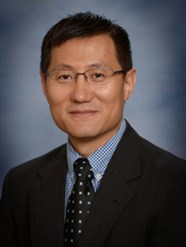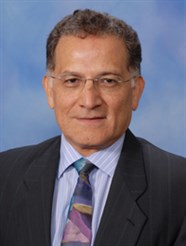

 Xin Zhan (left), Dr. Peng Li (center) and Dr. Edgar Sánchez-Sinencio (right), researchers in the Department of Electrical and Computer Engineering at Texas A&M University, received the prestigious 2016 DAC Best Paper Award from the Institute of Electrical and Electronics Engineers (IEEE) Association for Computing Machinery (ACM) Design Automation Conference (DAC).
Xin Zhan (left), Dr. Peng Li (center) and Dr. Edgar Sánchez-Sinencio (right), researchers in the Department of Electrical and Computer Engineering at Texas A&M University, received the prestigious 2016 DAC Best Paper Award from the Institute of Electrical and Electronics Engineers (IEEE) Association for Computing Machinery (ACM) Design Automation Conference (DAC).
DAC is the world’s premier conference for design automation and methodologies for integrated circuits and electronic systems. In 2016, DAC received almost 700 paper submissions from which 16 were selected as best paper award candidates. Through a rigorous review process, the paper from the Texas A&M team, “Distributed on-chip voltage regulation: theoretical stability foundation, over-design reduction and performance optimization,” received one of the two best paper awards at the conference.
Placing multiple voltage regulators on the chip facilitates distributed on-chip voltage regulation and offers significant benefits in power supply noise suppression and energy efficiency. As an example, an IBM Power8 microprocessor integrates more than 1,000 on-chip voltage regulators. The complex interactions between the active voltage regulators and the large passive sub-network, however, may render the power delivery network (PDN) unstable, leading to design failures. While traditional stability measures such as phase margin are not applicable to regulated PDNs with a huge number of loops, a brute-force analysis of network stability is computationally intractable.
In their paper, Zhan, Li and Sánchez-Sinencio developed a groundbreaking approach for designing large on-chip power delivery networks with distributed voltage regulation. Their approach is based on a new hybrid stability margin concept and the associated stability-checking method for PDNs with multiple distributed active regulators. They systematically investigated the theoretical foundations underpinning a localized design methodology in which the stability of the entire network can be efficiently examined and ensured through a hybrid stability constraint that is defined locally for individual voltage regulators. They developed powerful design techniques to reduce pessimism in stability analysis, which overdesigns and maximizes system performances such as load regulation and energy efficiency while ensuring the stability of the complex PDN system. This work is expected to enable distributed on-chip voltage regulation, an emerging power delivery architecture, for a broad range of energy-efficient electronic systems including microprocessors, embedded systems and smart sensors.
Li, a professor in the department, received his Ph. D. in electrical and computer engineering from Carnegie Mellon University. He is also a faculty member of the Texas A&M Institute for Neuroscience and Texas A&M Health Science Center. His research interests are in integrated circuits and systems, electronic design automation, computational brain modeling, brain-inspired computing and VLSI-based machine-learning systems. He has authored and co-authored more than 180 publications and edited two books.
Li’s work has received four IEEE/ACM Design Automation Conference Best Paper Awards, an Honorary Mention Best Paper Award from the IEEE International Symposium on Circuits and Systems, a prestigious IEEE/ACM William J. McCalla ICCAD Best Paper Award, two SRC Inventor Recognition Awards, two MARCO Inventor Recognition Awards, a National Science Foundation CAREER Award, the DAC Best Paper Hat Trick Award, the DAC Prolific Author Award and the DAC Top 10 Author in Fifth Decade Award. At Texas A&M, he received the department’s Outstanding Professor Award and was named a TEES Fellow and a William O. and Montine P. Head Faculty Fellow by the Texas A&M College of Engineering.
Li graduated 13 Ph.D. students and 22 Master of Science students. His former associates have obtained faculty and research positions in academia and industrial labs (Michigan Tech, Cornell Medical College/Cornell University, Intel Strategic CAD Laboratories) and R&D positions in the U.S. high-tech industry. He has served on the editorial boards of IEEE Transactions on Computer-Aided Design of Integrated Circuits and Systems and IEEE Transactions on Circuits and Systems II. Li currently serves the IEEE Council on Electronic Design Automation as vice president for technical activities, has consulted for two silicon-valley startup companies and Intel Corporation and is a Fellow of IEEE.
Sánchez-Sinencio, University Distinguished Professor and the TI Jack Kilby Chair Professor in the department, earned his Ph.D. in electrical engineering from the University of Illinois at Urbana-Champaign. Sánchez-Sinencio is a preeminent scholar in the areas of analog and mixed-signal integrated circuits, and radio-frequency circuits and systems. His seminal contributions to the field include pioneering work in switched-capacitor circuits, continuous-time filters and current-mode filters and research on radio frequency integrated receivers. He is interested in Energy Harvesting Power Management and Sleep Medical Electronics.
Sánchez-Sinencio has co-authored five books and co-edited another. He has been co-author on more than 400 technical papers and is a Life Fellow of IEEE. His awards include: the IEEE Guillemin Cauer Award; the IEEE Darlington Award; the IEEE Circuits and Systems Society Golden Jubilee Medal; the IEEE Circuit and Systems Charles Desoer Technical Award; an honorary doctorate from the National Institute for Astrophysics, Optics and Electronics in Mexico; and Texas Senate Proclamation No. 373 for Outstanding Accomplishments.
Zhan received his bachelor’s degree in electronic science and technology and his master’s degree in microelectronics and solid-state electronics from Huazhong University of Science and Technology, Wuhan, China, in 2011 and 2014, respectively. He is currently pursuing his Ph.D. in electrical and computer engineering from Texas A&M under the advisement of Li. His current research interests include computer-aided design of very large-scale integrated circuits and optimization of on-chip regulated power delivery networks.